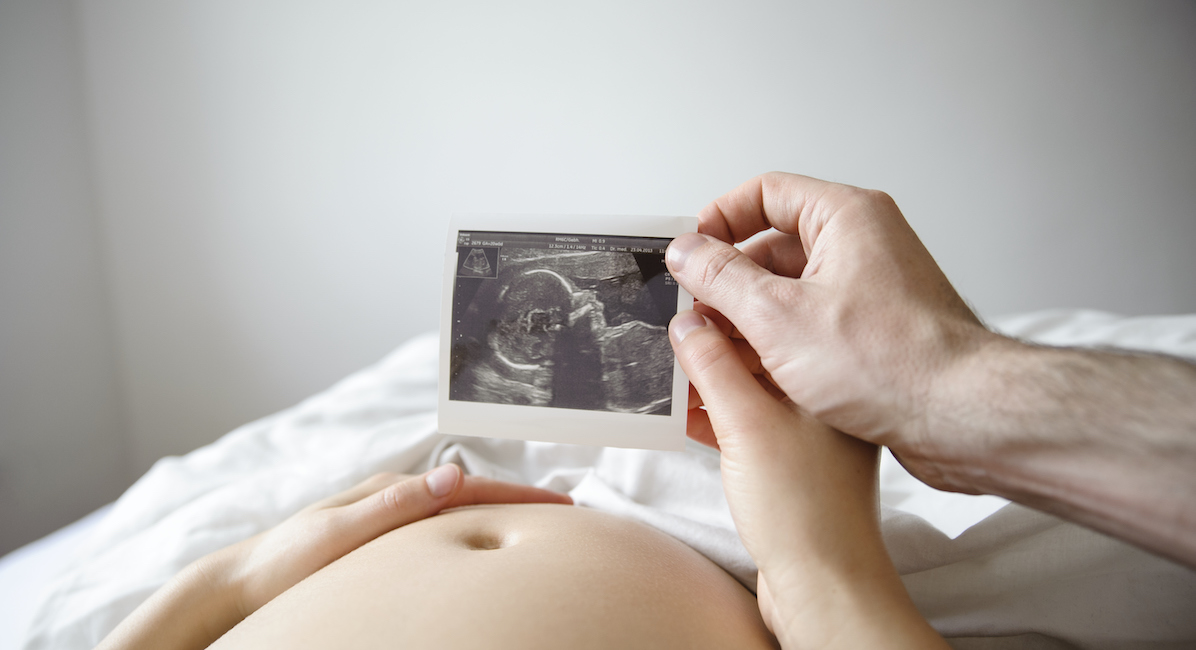Every abortion kills a human being and carries risks to the health of the mother, but those risks increase as the gestational age of the child increases. This fact is one of the driving forces behind Mississippi’s 2018 law restricting abortion to the first 15 weeks (four months) of pregnancy, which is being challenged in the Dobbs v. Jackson Women’s Health Organization case set to go before the U.S. Supreme Court in the fall of 2021.
The law, HB1510, states, “Abortion carries significant physical and psychological risks to the maternal patient, and these physical and psychological risks increase with gestational age. Specifically, in abortions performed after eight (8) weeks’ gestation, the relative physical and psychological risks escalate exponentially as gestational age increases.”

18-week preborn child in second trimester (Getty Images)
The law sources research published in the National Institutes of Health’s (NIH) National Library of Medicine: Risk factors for legal induced abortion-related mortality in the United States. That study found that a woman’s risk of death from abortion increased by 38% for each additional week of gestation. Compared to women who underwent abortions at or before eight weeks (two months), women who underwent abortions in the second trimester were found to be “significantly more likely to die of abortion-related causes.” The results showed that “[u]p to 87% of deaths in women who chose to terminate their pregnancies after 8 weeks of gestation may have been avoidable if these women had accessed abortion services before 8 weeks of gestation.” In truth, abortion is not medically necessary — and therefore, all of these women’s deaths were “avoidable.”
In addition, as previously reported by Live Action News:
Research published by the National Center for Biotechnology Information, part of the U.S. National Library of Medicine, found… the “risk of septic (life-threatening blood infection) abortions is markedly increased with advanced gestational age.”
Additional research published in Obstetrics and Gynecology revealed that “late-term abortions carry a 91 times greater risk of death than first trimester abortions.” And research published by BMC Women’s Health found that “[g]estational age and the method of surgical abortion have been reported to be the most significant and interrelated factors that cumulatively affect abortion-related morbidity” and that the risks of complications “increase exponentially with increasing gestational age.”
The risks, as described by abortionists
Abortionists have described why the risk of death for women increases so drastically as gestational age increases. Abortionist Willie Parker wrote in his book, “Life’s Work: A Moral Argument for Choice,” that the risk increases because “[e]verything is more difficult in second trimester abortion… In these procedures, the risk of serious complications increases… [because] in a second trimester abortion I have to evacuate her uterus differently.”
He added, “There’s a higher chance of perforating the uterine wall with the forceps or doing damage to an adjacent organ, and a higher risk of leaving some part of the pregnancy [fetal body parts] behind: part of the placenta can get stuck on scar tissue from a [previous] caesarean, for example.”
Late-term abortionist Warren Hern explained that another reason for the increased risk to women is that the baby has grown larger, making the child more difficult to kill.
“Fetal weight doubles from 13 to 14 weeks, and total tissue weight almost doubles. The fetus is significantly larger than at 12 weeks and the calvaria [skull] may not easily enter or pass a large (12 mm) suction cannula,” he wrote. “… At 13-14 weeks from the first day of the LMP [last menstrual period], a transition period exists between straightforward vacuum aspiration and true D and E procedure… At 15 weeks… the procedure continues with forceps. The probability of difficulty in removing the calvaria [skull] is greater at 15 weeks than at any other time.”
Curtis Boyd, a late-term abortionist who has been facing questioning related to a patient’s abortion-related death, admitted, “As gestation increases, it takes longer to do the procedure. It’s more difficult. It might be much more time involved in some of them so you’ve got more skill and experience required. It’s more specialized.”
Asked under oath if the risks of abortion increase as the gestational age of the child increases, Boyd simply responded, “Yes.” He said he pays his employees more money to carry out later abortions because “you’re more likely to have a hospitalization.”
The injuries
Those hospitalizations can be from a range of abortion-related complications including cervix injuries, uterine perforation, perforation of other organs, incomplete abortion, infection, and hemorrhaging. Women have been hospitalized due to excessive bleeding and have required hysterectomies.
In 2020, LeRoy Carhart, a longtime Maryland and Nebraska abortionist who is one of a handful of providers committing abortions extremely late in pregnancy, injured two women so badly that hospital staff were traumatized. Both women underwent abortions at 25 weeks within days of each other, and both were hospitalized. A whistleblower from the hospital told Operation Rescue about the injuries.
Patient #1 was in critical condition and had a hole in her uterus and her bowels were “mangled,” said the whistleblower. Parts of her baby were still inside her womb and some had been shoved through the hole in her uterus, including one of the baby’s legs. The whistleblower said it was “the most horrific thing I have ever seen.” She was heavily bleeding and showing signs of sepsis. Her injuries were so severe she had to have a general surgeon resect her bowel and she received a colostomy with an external bag.
Patient #2 also suffered a perforated uterus about nine inches wide. She was in “very critical” condition and the damage was so bad that she needed a hysterectomy. Parts of her baby were also pushed through the hole the abortionist put in her uterus and was mostly intact, but missing an arm and part of the spinal cord. Operation Rescue reported that the baby’s head was still attached “by a strip of flesh” and the whisteblower “indicated that it was quite upsetting to see a nearly complete fetus pushed inside the abdominal cavity, and wondered about the force it took to shove the baby’s body that far into the mother’s abdomen.”
Incomplete data puts preborn children, women, and future children at risk
In addition to increased risks for the mother, future children are also put more at risk by previous late-term abortions. A 2020 study published in Obstetrics & Gynecology revealed that there is an increased risk for “extremely preterm birth” and “very low birth rate” for future children of women who had abortions after 12 weeks than of women who had abortions prior to 12 weeks. Researchers involved in the study concluded that the risk of having an extremely premature child in the future “is higher with increasing gestational age at the time of induced abortion.”
Just how many women have been hospitalized, injured, or killed by later abortions is unknown. Only about half of all states report abortion complications, making it impossible to know the truth. Yet the research and admissions show that abortion is not the simple and safe procedure that the abortion industry claims it is.
Mississippi’s restriction on abortion to the first 15 weeks of pregnancy saves preborn living human beings from violent death through dismemberment D&E abortions while also protecting mothers from horrific injuries they were never warned them about.
“Like” Live Action News on Facebook for more pro-life news and commentary!







